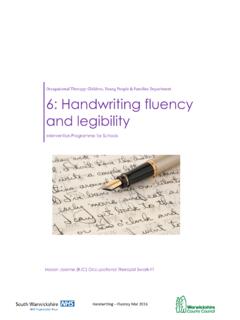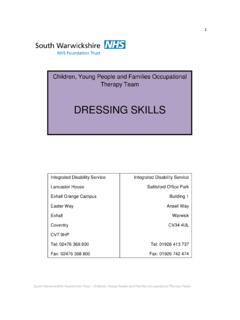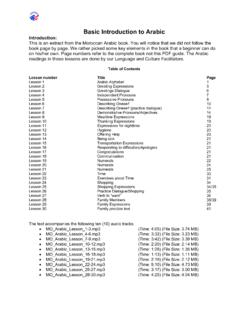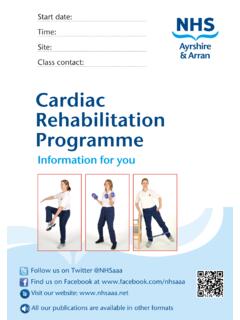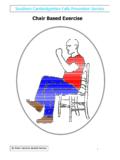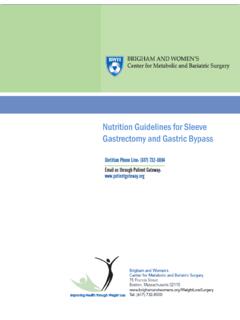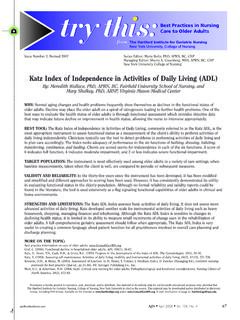Transcription of GROSS MOTOR SKILLS - swft.nhs.uk
1 1 South Warwickshire Foundation Trust Children, Young People and Families Occupational Therapy Team Integrated Disability Service Lancaster House Exhall Grange Campus Easter Way Exhall Coventry CV7 9HP Tel: 02476 368 800 Fax: 02476 368 800 Integrated Disability Service Saltisford Office Park Building 1 Ansell Way Warwick CV34 4UL Tel: 01926 413 737 Fax: 01926 742 474 Children, Young People and Families Occupational Therapy Team GROSS MOTOR SKILLS 2 South Warwickshire Foundation Trust Children, Young People and Families Occupational Therapy Team Contents Page Number Contents 2 Enhance Development of MOTOR SKILLS 3 - 4 Ball SKILLS 5 - 6 Postural Control & Shoulder Stability 7 - 8 Warm Up Exercises 9 Pelvic & Core Stability 10 - 11 Posture Preparation 12 3 South Warwickshire Foundation Trust Children.
2 Young People and Families Occupational Therapy Team Enhance Development of MOTOR SKILLS . GROSS MOTOR SKILLS are big MOTOR SKILLS that require balance and co-ordination and include a variety of big movements in play, such as running, jumping, hopping, crawling, climbing, kicking, pushing and pulling. In order to develop these SKILLS , try some of these activities: Playing on playground equipment such as swings, climbing frames and merry-go-rounds. Rough and Tumble play with an adult.
3 Jump on a space hopper or trampoline. Funny walks wriggle like a worm, walk like a crab, soldier or pirate, hop like a frog. Sing songs or rhymes and add actions and dance. Try following the actions of party songs Superman, Hokey Cokey, Cha Cha Slide. Create different obstacle courses for play that require walking along a line, on stepping stones, over, under and through objects, hopping, jumping or walking in a crouched position. Place mats or paper on the floor and pretend they are islands surrounded by sharks so your child has to use them as stepping-stones.
4 Play with balloons hitting or kicking to another person. Blow bubbles and get your child to pop them with their pointer finger. Make sure you vary the height and direction of the bubbles so your child has to reach, jump, crouch and chase them. This activity also helps development of hand-eye co-ordination in preparation for writing and drawing. Play Twister or Simon Says (using odd body parts such as standing on one leg, or balancing on one foot and one hand).
5 Play with balls or beanbags whilst the child is sitting, kneeling, half-kneeling, squatting and standing to practice throwing, catching, kicking, bouncing etc. Play tug-of-war. 4 South Warwickshire Foundation Trust Children, Young People and Families Occupational Therapy Team Kicking a ball in the back garden or park. Skateboarding. Play What s the time Mr Wolf? where the child has to stop quickly and not move. Hopscotch or jumping on squares in an obstacle course.
6 Practicing walking along balance beams or stools with supervision. Organised activities such as swimming, gymnastics, horse riding, martial arts such as Tai Chi, Tae Kwon-do or Karate or dance classes. Attend organised play gyms. 5 South Warwickshire Foundation Trust Children, Young People and Families Occupational Therapy Team Ball SKILLS Catching a ball is a skill which should be approached carefully and sympathetically. Some children are quite frightened of a ball coming towards them through the air and are more inclined to avoid being hit by it than attempting to catch it.
7 While children are waiting to catch a ball, ask them to rub their hands together quite hard. The tingling sensation felt afterwards gives tactile feedback in the catching area of the hands. Before catching is attempted, making the hands familiar with the feel of a variety of sizes of ball is useful. Familiarity activities for the hands Equipment needed: balls of different sizes, beanbags, ropes, skittles, etc. 1. Standing feet apart, roll the ball in a figure of eight around the feet, using different parts of the hands, (backs, fingers, palms), first in one direction and then the other.
8 2. Sitting, legs bent, feet on the floor. Roll the ball gently under the knees from one hand to the other. 3. As in 2, but roll the ball under the knees, round the feet, first in one direction, then the other. 4. As in 3, but roll the ball under the knees, round the feet then round the back in both directions. 5. Sitting legs astride. Hold the ball near the ground in both hands, open the hands to release the ball. Try to get both hands back to the original position as the ball bounces up.
9 6. Sitting legs straight, feet together. Place the ball on the ankles, raise the legs and catch the ball as it rolls down the legs. 7. As in 6, but first roll the ball down to ankles, then raise the legs and catch the ball as it rolls back towards the body. 8. Using different parts of both hands, guide the ball between and round an obstacle course made from beanbags, ropes, skittles, etc. 9. As in 8, using either hand. 6 South Warwickshire Foundation Trust Children, Young People and Families Occupational Therapy Team Once the child is more familiar with balls and how to handle them, work through the following activities, beginning with rolling and ending with throwing and catching.
10 Always use bigger balls (or balloons) first and then move onto smaller balls as SKILLS improve. Encourage the child to talk themselves through each activity beforehand (verbal self-guidance). Rolling and stopping a ball 1. Roll the ball, chase it and stop it. 2. Roll the ball, chase and run past it, crouch down and gather the ball in the hands. 3. Roll the ball against a bench or wall; gather the rebound in the hands. 4. The child stands at the opposite end of a table from a partner, with each person taking it in turns to roll the ball to each other, catching it as it drops off the table.



